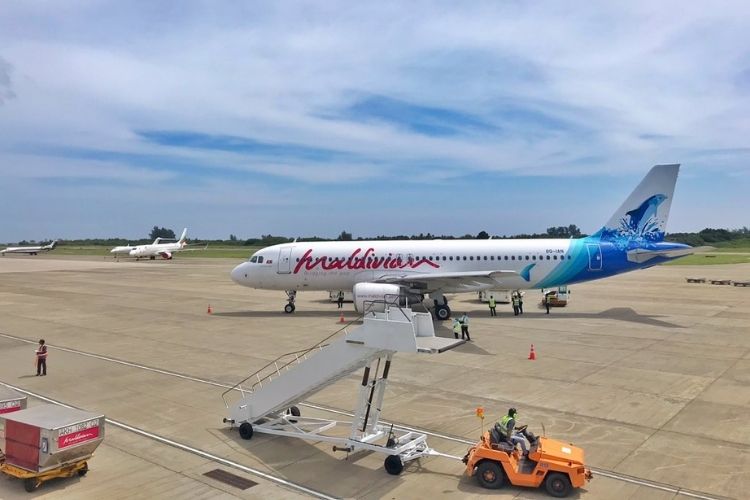The national airline of the Maldives, Maldivian announced to commence direct flights from Mumbai to Maafaru. According to Maldivian, the airline will operate 3 weekly flights from Mumbai to Maafaru starting from April 2021.
Speculations started rising over the past few days on Maldivian’s new destination. The airline says that India is a lucrative market for the resorts and guesthouses in Noonu Atoll. Furthermore, India is also currently the leading source market to the Maldives in terms of tourist arrivals.
The national airline played a significant role during the pandemic – and our objective is to spread our wings further and to be able to assist our communities and the economy.
DMD of Maldivian said.
Maafaru International Airport located in Noonu Atoll officially opened on 1st December 2019. The airport lies close to two of the most luxurious resorts in the Maldives; Velaa Private Island and Soneva Jani.
The Maafaru International Airport was developed with USD 60 million funded by Abu Dhabi Fund for Development (ADFD). The airport features a 2200 meter runway, taxiways, Apron with shoulder and Service roads. Maafaru can accommodate and provide all services to the Airbus A320 and Boeing 737 aircraft.
Maafaru Airport’s runway is set to be further developed to accommodate Boing 777 twin-jet aircraft. Earlier reports suggest that the United Arab Emirates (UAE) government has approved funding for the project to be further developed.
Also read: Mohamed Mihad Appointed as the Managing Director of Maldivian
The national airline of the Maldives operates international flights and local domestic services. Moreover, Maldivian started its services with three aircraft; a Bombardier Dash 8 Q200; and a Dornier 228. The airline later commenced its international flights in 2008, with scheduled flights to Thiruvananthapuram, India.
Today, The nation’s carrier operates daily frequent flights to various airports within the country. In addition to that, Maldivian also provides seaplane transfers to resorts in the Maldives.
Feature image by Gan International Airport







